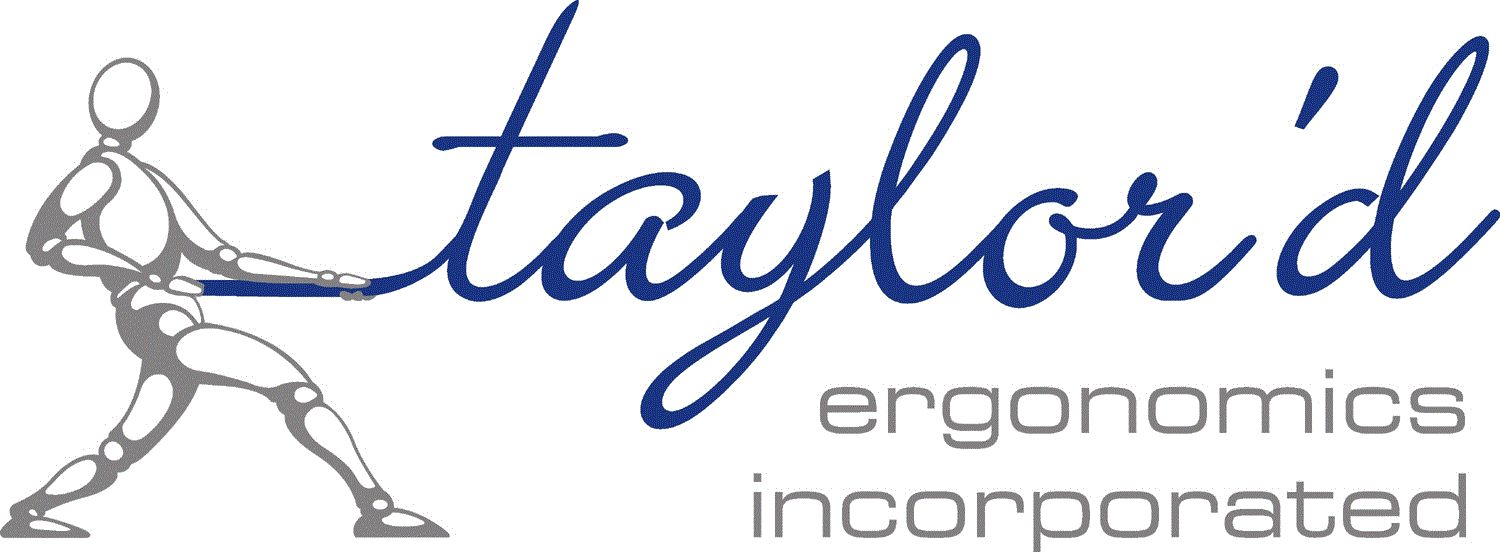At the Applied Ergo conference in New Orleans last week, I made a presentation about questions to ask various ergonomics program stakeholders, when looking for ways to cost-justify a change. Supervisors, one of those stakeholder groups, are often an underutilized resource; they have a deep understanding of issues in their departments. As with any game of 20 questions, we win by listening!
Here is a summary of questions aimed at supervisors, and some responses you might get in four different work settings.
A) Automotive seating
B) cookie Bakery
C) Call center
D) Delivery service
1. How do you measure productivity in your department?
A) The target production rate is 65 seats per minute.
B) Line stoppages should be less than 2 minutes per shift. Our output should be 500 biscuits per minute.
C) The target is 25 calls per operator per hour.
D) We aim for 99% on-time deliveries.
2. Which task has the lowest productivity in your department?
A) Station 32 has the most frequent stoppages.
B) We miss the target when we are short-handed at packaging, and when we are training new employees.
C) Some work groups have more dropped calls, and therefore don’t meet their targets.
D) One particular route misses the target more often than others.
3. What does that low productivity cost the organization?
A) The team leader spends most of the day near Station 32. It’s hard for her to get anything else done during the day.
B) We run overtime on weekends to make up the missed production.
C) Team leads have been coaching the work groups with more dropped calls.
D) We add trucks to certain routes to meet delivery targets.
4. How do employees know if they are meeting expectations?
A) An alarm sounds and the team leader goes to the area. There is also a display in each team’s lunch area.
B) We schedule overtime.
C) Each employee has a dashboard where the stats are shown.
D) They don’t.
5. How do you measure quality?
A) We track the errors that require re-work (usually by the team leader).
B) Total weight of scrap (food product that falls to the floor)
C) Customer complaints are tracked.
D) Lost packages and customer complaints.
6. Which task has the poorest quality performance in your department?
A) Station 32
B) Packaging (dropped biscuits)
C) Workgroup 3
D) Route D
7. What is the cost of that quality problem to the organization?
A) Team Leader spends 2 hours/day performing re-work
B) Total scrap cost for packaging in my department is $34000/year.
C) We lose 5 customers per year in Workgroup 3.
D) Route D loses more packages than others, at a cost of $2500/year.
8. How do you measure employee engagement?
A) We can hit a “happy/not happy” button after we clock out.
B) Absenteeism.
C) We have an annual company-wide survey.
D) People can post out of routes.
9. Which task is associated with the lowest engagement?
A) I can’t tell which job is associated with “not happy” scores, but I’m told that my department has lower happiness scores than others.
B) Packaging employees are absent more often than others in my department.
C) Workgroup 3 has had lowest survey scores for 2 years in a row.
D) I’m constantly training new employees for Route D.
10. What is the cost of that engagement problem?
A) I’ve been told that I could be promoted if I could improve my department “happiness” scores.
B) The average absenteeism rate for my 20 packagers is 4 days per year. This is higher than the plant average of 1.2 days/year.
D) Some days it feels like I spend 80% of my time trying to deal with employee concerns in workgroup 3. They don’t like the software, they don’t like their chairs, they want sit/stand desks, and their headsets hurt their ears. It’s always something and I don’t know how to prioritize.
C) We spend about 30 days per year training new employees on Route D.
11. How long does it take to train a new employee to work independently?
A) The team leader is assigned to work closely with each new employee for 2 weeks.
B) We have two people paired up on the job for 3 full days.
C) A new employee takes 2 full weeks before they can take calls independently, and another 2 weeks before they are expected to meet production targets.
D) We do ride-alongs for one full week after their one-week new employee orientation training.
12. Aside from time, what other costs are associated with training a new person?
A) Uniforms and onboarding training cost $2000 per employee. A new employee also gets 2 full days of orientation and safety training up front with HR.
B) Each employee is provided with a $300 allowance for safety shoes and glasses.
B) We send a hardware package to each new employee’s home office, which costs $3000 per person.
D) We send new employees to a defensive driving course at a cost of $800 per person.
13. What mistakes do people most often make while they are learning?
A) They strip the threads on the #13 bolts, and poke holes in the fabric occasionally.
B) They put broken biscuits into the packages, and drop biscuits when they get behind.
C) They disconnect callers instead of re-directing them to the correct department.
D) One Route D, they drop packages at Taylor Crescent instead of Taylor Court.
14. Do you have trouble finding people to do the job?
A) Yes. Lots of people quit after the first day on the job.
B) Yes. Most people prefer the jobs that allow them to move around more so even when I get a new person trained, I know they are looking for an opportunity to move to another position.
C) Yes. The nature of the complaints handled on this job requires a certain finesse.
D) Yes. Not everyone can follow this route because of the construction detours. And the truck cab is a bit unique.
15. What characteristics make a person more likely to succeed at the job?
A) Someone with good upper body strength.
B) Someone who is active outside of work.
C) Someone with particular patience and interpersonal skills.
D) Someone with a good sense of direction and long legs.
Let’s talk about XYZ job (identified above)…
16. Have any injuries or strain/sprain concerns been expressed at this job?
A) Yes. Two years in a row we’ve had lost time shoulder injuries here.
B) Yes. We’ve had a few neck and wrist complaints.
C) Not really, although 3 people have been asking for sit/stand desks.
D) Not yet.
17. How do you think this job could be improved?
A) I’m thinking about moving the team leader’s work bench closer to Station 32.
B) I don’t understand why we installed the guard so far back from the conveyor belt. Everyone seems to be reaching all the time.
C) I’d like to figure out what happens immediately before those dropped calls. I’d also love to know what my team members’ home offices really look like.
D) Route D always has a lot of construction. I have some ideas about how to switch up the routes so Route C and Route D would share these difficult driving segments.
18. What suggestions have workers made about improving this job?
A) They want the tool to be suspended.
B) They want matting on the floor, and diverters to bring the biscuits closer, like we have on line 5.
C) I haven’t asked.
D) They want the new vehicles like we’re trialing on Route C.
19. What would be involved in implementing these changes?
A) I’m not sure, but I can ask maintenance. They installed a balancer in another area.
B) Good question. I’ll have to talk with engineering and the supervisor on Line 5.
C) I should spend some time with the employees who are having trouble to find that out.
D) Maybe we could rotate the new vehicle through various routes to get an idea whether that addresses the concerns.
20. As an ergonomist, how can I help you to make it so?
A) You could do a risk assessment to see if the weight of the tool is causing a high risk. I think it might be something else.
B) You could do a risk assessment to see if diverters would reduce the risk of injury.
C) You could confirm that we’ve provided appropriate furniture and training for employees to set up comfortable home offices.
D) You could provide some training to ensure that our drivers are adjusting their driver compartments optimally.
These 20 questions, aimed at Supervisors, will help you to find opportunities to cost-justify an ergo intervention based on savings through productivity, quality, engagement, or injury reduction. You might ask follow up questions to get the cost information that you’re looking for. It’s unlikely that you’ll discover potential savings in ALL four areas, but you’ll almost certainly be surprised by what you learn through this process!
Let us know what you find out!


